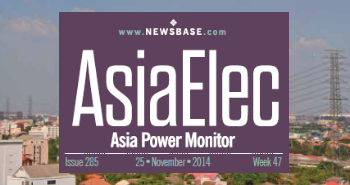India eyes small modular reactors to boost clean energy transition

With clean energy a major focus area for India, New Delhi is looking to reduce its reliance on fossil fuels over the coming years. The government’s strategy has identified the role of nuclear power in the overall energy mix. India is eyeing new technologies such as small nuclear reactors (SMRs) to make the clean energy transition.
During this year’s union budget, which was presented in July, Minister of Finance Nirmala Sitharaman, said that nuclear energy will likely form a "very significant" part of the energy mix and the government will work with the private sector to help boost this sector.
“Our government will partner with the private sector for, one, setting up Bharat Small Reactors, two, research and development of Bharat Small Modular Reactor, and three, research and development of newer technologies for nuclear energy,” Sitaraman said during her budget speech.
The private sector is already showing interest. In August, Press Trust India reported that India is planning to develop 40-50 SMRs as replacements for existing captive thermal power plants. The Department of Atomic Energy, in association with Tata Consulting Engineers, part of Mumbai-based private conglomerate Tata Group, is working on the Bharat Small Modular Reactor by redesigning a current 220-MWe Pressurised Heavy Water Reactor (PHWR).
These 40-50 SMRs will be built over a period of seven to eight years. The Nuclear Power Corporation of India Limited (NPCIL) operates 16 PHWRs with a capacity of 220 MWe each, two PHWRs with a capacity of 540 MWe each, and two PHWRs with a capacity of 700 MWe each. NPCIL is also developing 14 PHWRs, each with a 700-MWe capacity, which are expected to be completed by 2031-32.
The state-owned power company NTPC has also announced plans to establish a new wholly-owned subsidiary dedicated to nuclear power generation. The company has reiterated its commitment to making nuclear power a key source of baseload energy for the coming decades and is also exploring SMR nuclear technology. NTPC already has a joint venture with NPCIL, in which it holds a 49% stake.
The Indian government believes that SMRs with their unique properties of modularity, scalability, small footprint and improved safety are an attractive option for repurposing of ageing coal-fuelled thermal power station sites. Installing SMRs in various parts of the country, especially in areas which are not suitable for large nuclear plants, can produce a large amount of low-carbon electricity.
According to the Indian government, SMRs are not anticipated to replace conventional large-scale nuclear power plants, which continue to function as base load power sources.
Nuclear power plants are developed and operated keeping in mind stringent regulatory requirements to contain radiation and to avoid exposure. The Indian government has stated that the techno-commercial development of SMRs is still in its early stages, even on a global scale.
As of today, there are just two completed SMR projects in operation globally. One is in Russia and is named Akademik Lomonosov floating power unit. It has two-modules of 35 MWe and began commercial operation in May 2020. The second one is a demonstration project called HTR-PM in China that was connected to the grid in December 2021 and is reported to have started commercial operations in December last year.



Follow us online